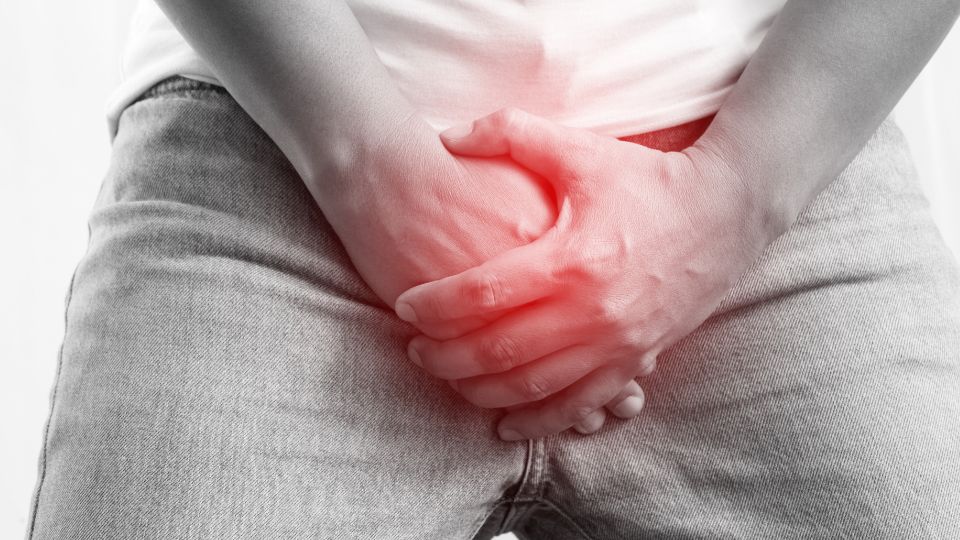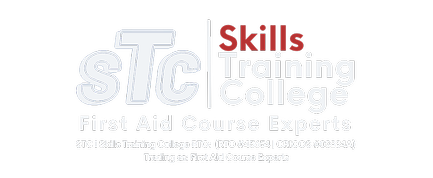Testicular Injuries
Testicular injuries only occur in males. Male genitals consist of the testicles and a penis externally positioned on the body. Testicles, of which there are two, are encased in a pouch of skin called the scrotum. Because of their unprotected and vulnerable external position, testicular injuries often occur unexpectedly and can range in pain levels from mild to debilitating.
Most Common Causes Of Testicular Injuries
Blunt force trauma: in the form of a direct strike is the leading cause in approximately 85% of reported testicular injuries. Getting kicked directly in the testicles can drop a man to the ground in screaming agony and prevent him from doing anything but roll around in agony for some time, as can being hit by moving objects like balls, pets and children that contact the area unintentionally.
Cycle accidents: handles bars, and bike seats have to be considered the number one enemy of any male who uses his bicycle or motorbike to perform tricks, stunts or to do dumb things only boys would ever conceive to do with something that wasn’t intended for that purpose.
Other mishaps: Then there are all the miscellaneous things that can sting, cut, or pierce the scrotum and injure the testicles. These include insects, zippers, tight-fitting pants, animal bites, bullet wounds, and accidents with machinery while on construction sites and tinkering in garages and workshops.
Common Types Of Testicular Injury
Testicular trauma and any resulting injuries cause different problems depending upon the source of the injury. Testicles are composed of different types of tissues. The scrotum also contains other structures attached to the testicles necessary for reproduction.
Rupture or fracture. An injury or penetration of the scrotum sac can rupture or tear the protective skin surrounding the testicle and damage the testicle inside. This is called a testicular rupture or fracture.
Degloving. In this type of testicle injury, the scrotum is torn away, like removing a glove from a hand. This brutal injury can be seen in male motorcyclists after a motor vehicle collision but there are plenty of other ways for the genitals to be degloved.
Contusion. When an accident injures blood vessels in the testicle, say by a baseball to the area at high speed, it can cause a contusion. A contusion is the fancy medical term for an impact site that results in excess swelling, bleeding, and bruising. Testicles that have received a contusion can swell unbelievably to the size of giant grapefruit, as can any toxins released by bites or stings delivered by insects.
https://www.urologyhealth.org/urology-a-z/t/testicular-trauma
Torsion. A tube called the spermatic cord contains blood vessels that lead from the abdomen to the testicles. A scrotum injury can result in this cord twisting, called torsion. Torsion can also happen spontaneously, without an injury.
https://www.mayoclinic.org/diseases-conditions/testicular-torsion/symptoms-causes/syc-20378270
Haematoceles. Pronounced’ he-ma-toe-seals’, the condition can occur when blood collects under a layer of the protective covering around the testicle or when blood collects in any body cavity.
https://radiopaedia.org/articles/scrotal-haematocele-1
Epididymitis. Testicular trauma can injure the epididymis, leaving it inflamed or infected. The epididymis is a coiled tube that holds sperm for a while after they leave the testicle. Epididymitis is an inflammation of the small, coiled tube at the back of the testicle. Signs and symptoms of epididymitis include a swollen, red, or warm scrotum and testicle pain and tenderness, typically on one side that comes on gradually.
https://my.clevelandclinic.org/health/diseases/17697-epididymitis
Dislocation. Some accidents can push the testicle out of the scrotum. It may end up in the abdomen, near the pubic bone over the penis, or other areas near the scrotum. This often happens in motorcycle crashes when the testicles collide with the gas tank and are displaced under force.
https://www.sciencedirect.com/science/article/pii/S1879522614000347
Infections. Animal bites and stings can cause swelling and pain and lead to infections in the scrotum.
Orchitis, pronounced ‘or-KIE-tis’, is an inflammation of one or both testicles. Bacterial or viral infections can cause orchitis, or the cause can be unknown. Orchitis is often the result of a bacterial infection, such as a sexually transmitted infection (STI). In some cases, the mumps virus can cause orchitis.
Testicular Injury Symptoms To Check For
Testicular injury typically causes substantial pain in the scrotum and that pain can migrate upwards to the abdomen. That pain is often completely debilitating for some time directly after the injury is received, and the recovery time will be different for each individual and their circumstance.
Other symptoms can include:
- Nausea (especially common with testicular torsion)
- Bruising or discolouration of the scrotum
- Swelling of the scrotum
- Blood in the urine
- Difficulty urinating
- Fever
Diagnosing Testicular Injuries
It is important to see your doctor if you have received a testicle injury. Some of these problems, like testicular torsion, are medical emergencies. Others, if left untreated, can cause infertility that is not reversible in extreme cases.
Serious testicular injuries can cause you to lose the testicle or cause the testicle to shrivel and shrink. They may also threaten your future ability to have children. Seeing your doctor promptly can lower your chances of these unwanted side effects and complications.
Quick medical assessment may also bring peace of mind, giving you the all-clear, and get you back to your usual activities faster without fear of further injury or damage being done to the original injury.
The doctor is required to annotate the injury and will need to know what caused the accident, as well as other information like:
- When the injury occurred
- How it happened
- How you felt after the injury
- How you feel now
- If you’ve ever had other problems with your penis, scrotum, or testicles
- Was it an accident
- Were you assaulted, and by whom
One common cause of Testicular Injury in men aged between 18-40 is the result of a male sexual predator attempting to assault a potential victim who fights back, causing the injury that allows them to get away from their assailant.
If your treating physician suspects this is the case, they are obligated by law to inform the police, and you will be questioned. That does not mean you will be charged, arrested, or jailed if you are innocent. However, it could mean all of the above if you are guilty or an eyewitness can testify you were the assailant.
Even if you are embarrassed or ashamed about how the injury occurred, answer your doctor’s questions honestly. The doctor will examine your penis and abdomen and any other body parts that could be injured as part of that examination.
Sometimes, the physician may request certain medical tests to rule out or highlight unseen damage.
Ultrasound imaging. A health care provider will hold an ultrasound device against your scrotum. This uses painless sound waves to create an image of the testicles and other tissues on a viewing screen. Depending on the country and the practice, the imaging can be viewed by you as it happens. You likely won’t know what you are seeing, but it is still interesting to watch.
MRI. This creates detailed images of your testicle and other structures inside your scrotum in a layer-by-layer manner so nothing can be missed.
Exploratory surgery. In some cases, a surgeon will need to make an incision into your scrotum to look inside. The surgeon can see which structures are injured, and, if needed, treat them during the procedure. In most cases, this is a simple day procedure, and you are free to go home after the doctor releases you, on average, three to five hours post the procedure. The holding period post-surgery ensures that you do not have any adverse reactions to the anaesthetic or complications from the procedure. It is a legally binding wait time that protects the surgeon and the patient should a worst-case scenario unfold.
How Do They Treat Testicular Trauma
Depending on how seriously you are injured, you may be able to treat testicular injuries on your own with a bag of frozen peas or an ice pack and rest.
However, severe testicular trauma requires treatment from a surgeon or other specialist as swiftly as possible. While not considered to be an immediate life-threatening injury that requires emergency services to be called, it should be assessed as swiftly as possible post receiving the injury.
Home treatments include:
- Placing an ice pack against your scrotum
- Resting and avoiding strenuous activity
- Medication to treat pain and inflammation
- Antibiotics prevent or treat infection where a piercing occurs, or the skin is broken and open to infection.
- Wearing a jockstrap to support your testicles
In the case of torsion, treatment involves a doctor turning the testicle back to its proper place by rotating it while holding the scrotum. However, surgery is typically needed, even if the testicle has been turned back into place.
If the accident has dislocated your testicle, a doctor may be able to press it back into position. Surgery may still be required.
Other types of surgery include opening the scrotum to stitch the covering of your testicle back together. In some cases, the surgeon will need to remove part or all of the testicle. If your scrotum has been badly damaged in an accident, the surgeon may need to move skin from another part of your body to fix it.
Your doctor may recommend an ultrasound of your testicles after your injury has healed to make sure there are no residual abnormalities.
How Do I Prevent Testicular Injuries
You can’t always prevent testicular injury, and accidents happen for a reason. You can take steps to assist in prevention.
- Wear a jockstrap when playing sports.
- If you’re doing an activity that could lead to a hard strike such as moving balls or martial arts wear a protective cup. Be sure the cup fits well and is properly placed over your penis and testicles. There is no ‘one size fits all’, so make sure yours fits you correctly.
Don’t use motorcycles and bicycles for any purpose other than getting from place A to place B in a safe manner, with all the wheels firmly kept on the road at all times.
Take care near machinery that could snag your clothing or skin. Avoid loose clothing and belts. Follow all safety rules while using machinery and be aware of what machinery is at hip height before operating the equipment.
First Aid Course Experts
FACE is an Australian-owned, nationally recognised RTO. We offer a range of options for you to gain or renew your First Aid certification. While visiting our website, check out our Blog page and take the Quiz for a challenge and fun as you discover how much or how little you know about First Aid.


